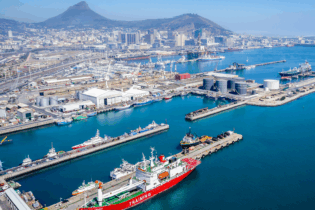The Department of Water and Sanitation (DWS) says the more than 5 000 registered dams in South Africa are standing strong even in the midst of spillages as experienced in some dams due to heavy rains in some parts of the country.
The Department says since Tropical Cyclone Eloise reached South Africa, it has only received two reports of potential damage to water infrastructure. These are the Pioneer Dam in the Kruger National Park as well as a barrage in Phalaborwa wherein a radial gate failed after being opened to release floods as a result of the cyclone. “At Kruger National Park, the dam had reached 100% capacity and there were fears that the spillway may not be sufficient, however, the dam was able to safely route the floods without causing any damage,” said Wally Ramokopa, a Director in the Dam Safety Regulation Unit within the Department. Ramokopa said most of the country’s large dams are designed to withstand floods and gave an assurance that there was no need for people to be alarmed for possible water infrastructure collapse. Adding to this, he said the Department enforces compliance for dam owners to conduct safety inspections at least every five (5) years. Dam owners are required to arrange for the execution of a formal dam safety inspection by an Approved Professional Person (APP). “When carrying out the five yearly safety evaluation, the APP will conduct a flood frequency analysis to check whether the dam is able to route through different flood occurrences. This helps us in knowing beforehand whether the dam would be overtopped should a certain size of a flood occur or potential damage of the dam,” Ramokopa explained. He affirmed that the Department’s dam safety office receives reports from APPs which contain information pertaining to the flood handling capability and structural behaviour of dams.“What this means is that we are able to scrutinise the reports and gather data which informs us as to whether or not the dam can withstand the pressure of water behind the dam’s concrete wall and/or the earth embankment wall. It is from then that we are able to predict possibilities of any movement or slip failure when the dam is full,” said Ramokopa.
In addition to the dam safety regulations dam owners must abide by, the Department’s dam safety office conducts dam safety compliance monitoring inspections to ensure that dam owners implement recommendations by APPs once the dam safety evaluations are received. Failure to implement the APPs recommendations, especially when findings indicate that the dam may not be safe and have the potential to fail and may cause loss of life, the dam safety office is able to issue directives to compel dam owners to comply. The regulation makes provision for government to make the dam safe and recoup the money spent from the owner of the dam should it be necessary in order to prevent possible loss of life. Almost two years ago, the Department got involved when part of Middle Lake Dam wall collapsed near Benoni. The Department has since assured the public that the country’s large dams are not likely to collapse as a result of the heavy rainfall that is predicted to continue until mid-February. He issued a stern warning to dam owners that not complying with regulations that the Department will act on them as they are putting the lives of others at risk and added that all owners are bound by law to comply and to also implement recommendations made by APP’s after inspections are conducted. “We are working very closely with highly specialised technicians to monitor major rivers where the cyclone would have severe impact. We are also part of the National Disaster Management Centre where we share data on any potential disaster during floods,” he said. The Department says it has officials on high alert to assist communities affected by the floods and is working with its sister department, the Department of Human Settlements, to bring relief to those communities.







